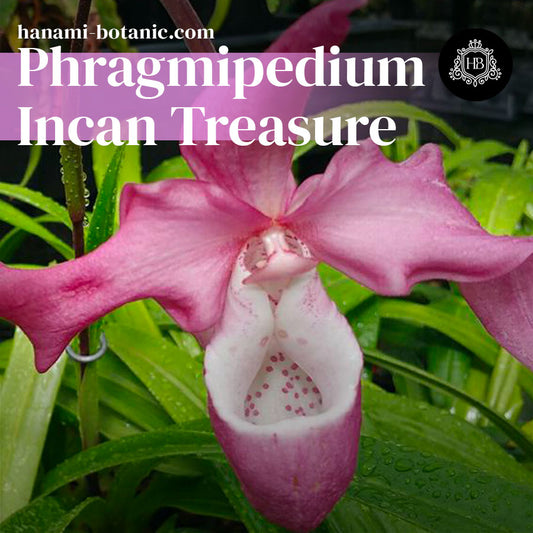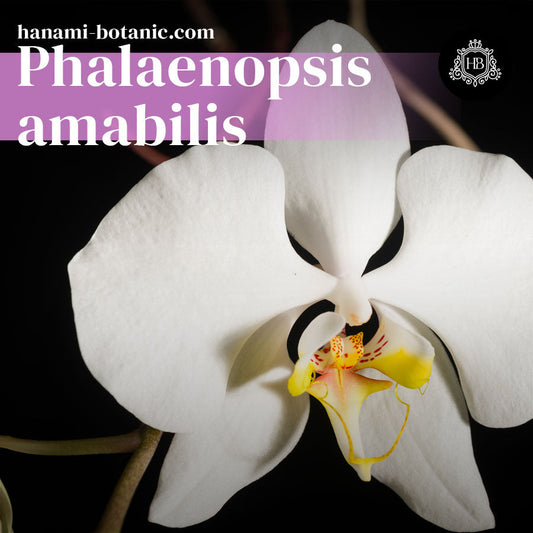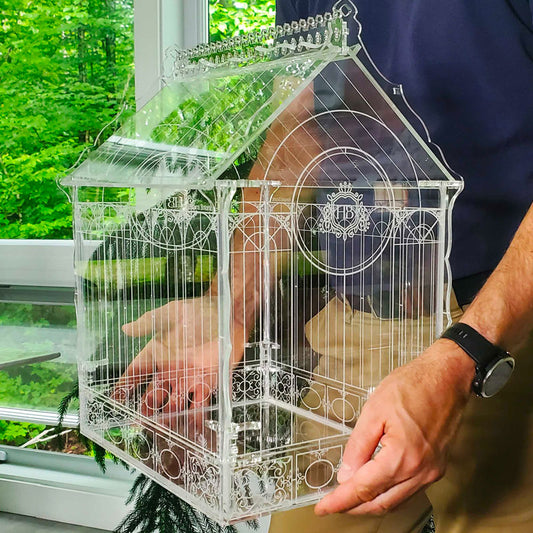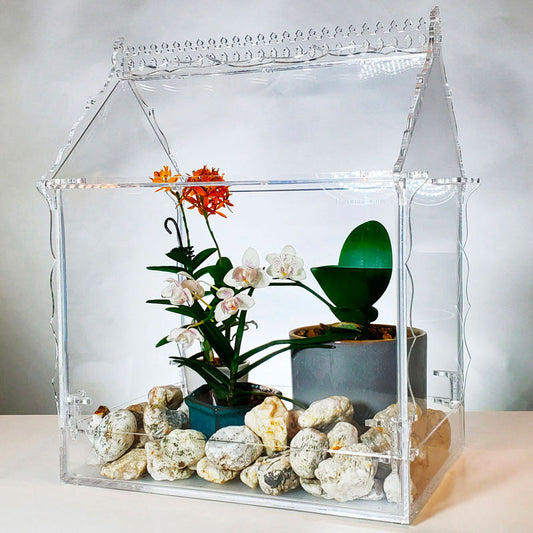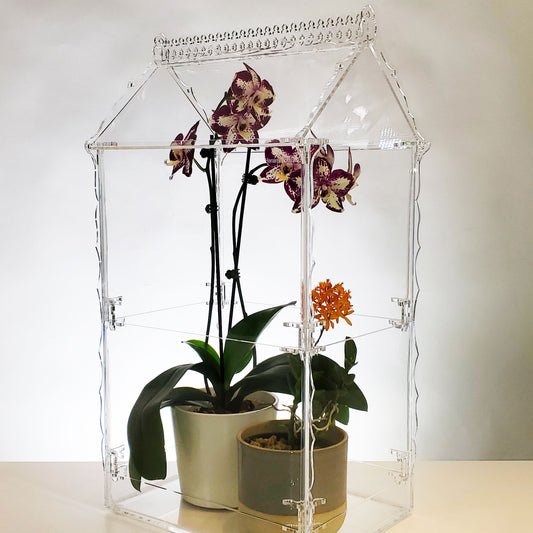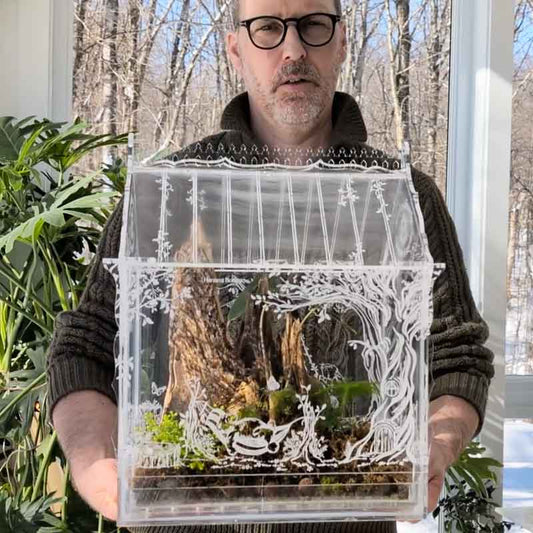Brassanthe Maikai — Blooming Grace in My Greenhouse
Christian St-PierreBrassanthe Maikai (often written Bc. Maikai) is a classic hybrid between Brassavola nodosa and Guarianthe bowringiana. You can see both parents clearly in its character: the fragrance and slim elegance of nodosa, combined with the vigor and generous flowering habit of bowringiana.
The result is an orchid that produces airy sprays of star-shaped lavender flowers, usually lightly speckled with deeper purple. Many clones release a soft perfume in the evening — not intense, just enough to make you lean closer.

What first surprised me about Maikai was how adaptable it is. It doesn’t behave like a demanding Cattleya-type orchid. Instead, it roots quickly, grows steadily, and rewards even imperfect care with reliable flowering.
A bit more light, a touch of humidity, or a light fertilizer schedule are often all it needs to show visible improvement. I remember one of my first divisions blooming only a year after I received it, even though the plant was still establishing — a pleasant reminder that some orchids simply want to grow.

Another thing I appreciate is how predictable its rhythm is: new pseudobulbs develop, roots follow, then a sheath forms, and flowers arrive soon after.
You always know where the plant is in its cycle, which makes it easy to support. In my collection, it has earned a reputation as one of the “easy companions” — dependable, rewarding, and full of personality.

Light Requirements
Because Brassanthe Maikai comes from two naturally sun-loving parents — Brassavola nodosa and Guarianthe bowringiana — it responds best to bright, indirect light.
Both species evolved in exposed tropical habitats: nodosa often grows on branches in full airflow, while bowringiana thrives in bright, open forests. That inheritance means Maikai is noticeably happier when it receives generous light throughout the day.
In my case, I grow it in an 8' × 6' greenhouse inside my garage, where I can control both temperature and light. Under strong LED lighting, it produces compact pseudobulbs, firm leaves, and dependable flower sheaths every year.
When the light is just right, the foliage keeps a medium-light green tone — never dark and lush, which usually indicates insufficient light. Too little illumination will keep the plant healthy but reluctant to bloom. Increase light gradually, and you’ll often see thicker growth and sheath formation in the following season.
Of course, not everyone grows orchids under LEDs or in a controlled greenhouse. On a windowsill, a few hours of gentle morning sun is ideal. An east-facing window works beautifully.
If the only option is a south- or west-facing exposure, the light may be too strong in the afternoon, so it should be filtered with a sheer curtain. Outdoors in summer (if your climate allows), Maikai can adapt to brighter light as long as acclimated slowly.
Indoors, supplemental lighting is very helpful during winter — especially in colder regions where natural light is weak or days are short. Even a modest grow light can make the difference between a plant that simply maintains itself and one that decides to bloom.
If you notice bulbs stretching or leaves turning deep green, the plant is asking for more light. When conditions are right, growth stays upright and compact, and flower sheaths form reliably at the top of each mature pseudobulb. With proper light, Maikai becomes one of the most predictable and rewarding orchids in a collection.


Temperature
Brassanthe Maikai is fortunately quite flexible when it comes to temperature, which makes it easier to grow than many Cattleya-type orchids. It grows well in typical home conditions, but it performs best with warm days between 22–28 °C (72–82 °F) and slightly cooler temperatures at night. This day-to-night change can encourage more reliable blooming, although Maikai will often flower even if nights remain warm.
In my setup, achieving cooler nights is not always straightforward. My greenhouse is built inside my garage, so I installed a simple DIY system that draws cool outside air into the growing space.
A controlled fan pulls in fresh air and automatically shuts off once the target temperature is reached. It’s inexpensive and surprisingly efficient, and it gives me a more consistent night drop — something Maikai definitely appreciates.
Most growers, however, won’t need anything quite that involved. A small environmental change is often enough. If the plant is kept indoors, simply placing it near a slightly cooler window at night, or cracking the window open during milder seasons, can provide the temperature variation needed.
Growing on a covered balcony during summer can also help recreate this natural cycle. If none of these are possible, don’t worry: Maikai remains cooperative and will usually bloom under stable, warm temperatures as long as the light is strong.
The plant itself gives subtle clues. When it receives warm days and modestly cooler nights, the growths mature quickly and sheaths form more regularly.
Even without an ideal night drop, a healthy, well-lit Maikai often rewards you with flowers — one more reason it has the reputation of being a friendly and forgiving orchid.

Watering & Fertilization
Brassanthe Maikai responds well to a steady watering rhythm. I allow the medium to dry slightly between waterings, but never completely. This light, consistent moisture keeps the pseudobulbs firm and encourages new roots to stay active.
If the bulbs begin to wrinkle, it’s usually a sign the plant needs a bit more water. Good drainage and airflow around the roots remain essential to prevent stagnation.
In my greenhouse, where light is strong and humidity moderately high, I water more frequently than someone growing on a windowsill.
Indoors, especially in winter, watering naturally slows. It’s always better to adjust to your conditions rather than follow a fixed schedule.
For fertilizing, I use the MSU formula, which provides a complete and balanced profile suitable for most water types. To this, I add liquid silicon and a seaweed extract to support strong new roots and overall vigor.
I also include a small amount of Superthrive, especially after repotting or periods of stress. After mixing, I adjust the pH to around 5.8–6.0, depending on the substrate; once a month, I feed closer to neutral.
This combination of light, regular moisture and balanced nutrition keeps Maikai growing confidently, with bright green root tips and strong growths that mature into reliable flowering.

Blooming & Re-Blooming
Brassanthe Maikai is a naturally cooperative bloomer once it reaches maturity. With bright, steady light, a healthy plant will typically flower at least once a year, and often again if conditions remain favorable.
In my setup, the combination of strong lighting and a modest night-time temperature drop has proven very effective, giving me reliable sheaths that develop fully into blooms. Even when nights stay warmer than ideal — which happens regularly in my small greenhouse — Maikai still manages to flower, a testament to its forgiving nature.
I find that consistency is what matters most. When the plant begins forming a sheath or buds, I try not to change its position or alter conditions abruptly; stable light and temperature seem to help the flowers develop smoothly.
Under this kind of predictability, Maikai follows its rhythm without fuss, producing clusters of soft lavender flowers that often remain open for several weeks.

Once the blooms appear, I usually bring the plant into the house and place it inside one of the glass terrariums I build. This keeps humidity more stable and helps prevent stress during flowering, especially during the dry winter months.
The flowers seem to last longer this way, and I get to enjoy them up close — a pleasant bonus of growing indoors.
As with many orchids, there is more than one path to success. This routine works well for me, but different growers may adapt their approach based on their own conditions.
What remains consistent is Maikai’s generous temperament: once it settles into your environment, it becomes one of the most dependable bloomers among Cattleya-type orchids — and a quiet favourite in my collection.
For me, Maikai has proven that some orchids really do want to grow. It responds to light, rhythm, and consistency, and gives back more than it asks. If you’re looking for a dependable Cattleya-type orchid, this one is an easy choice.

